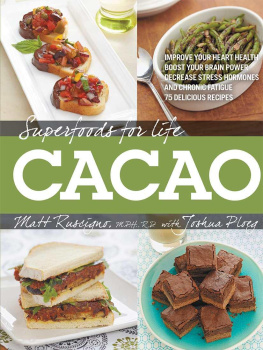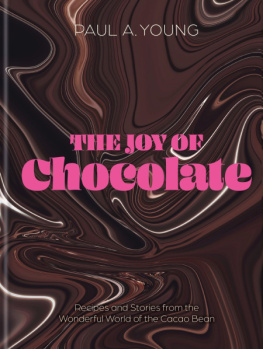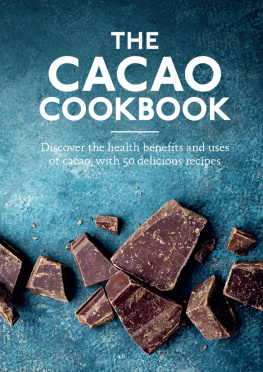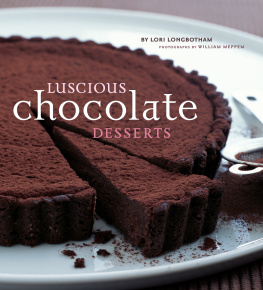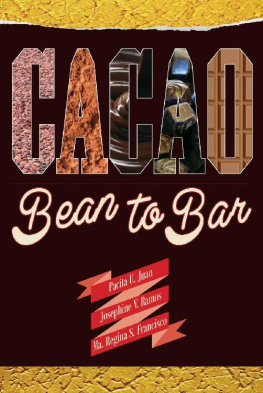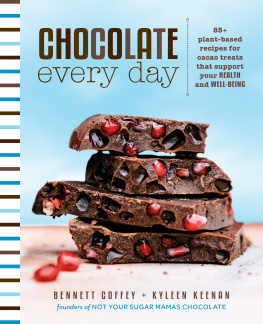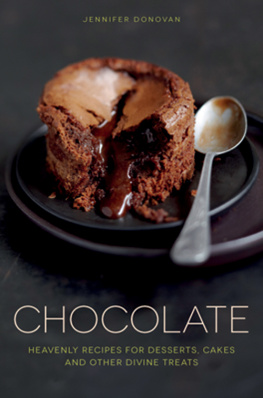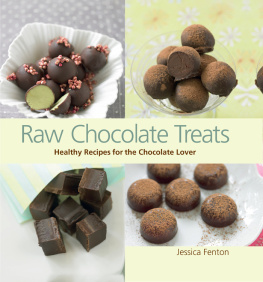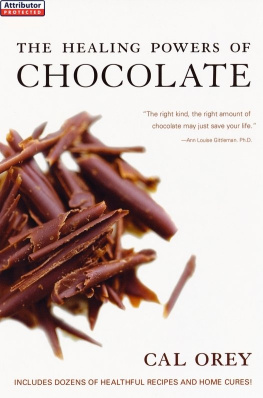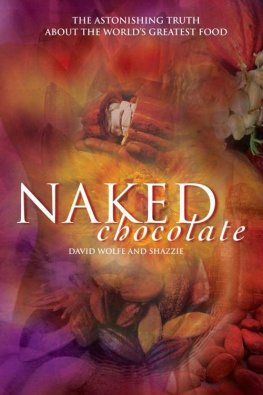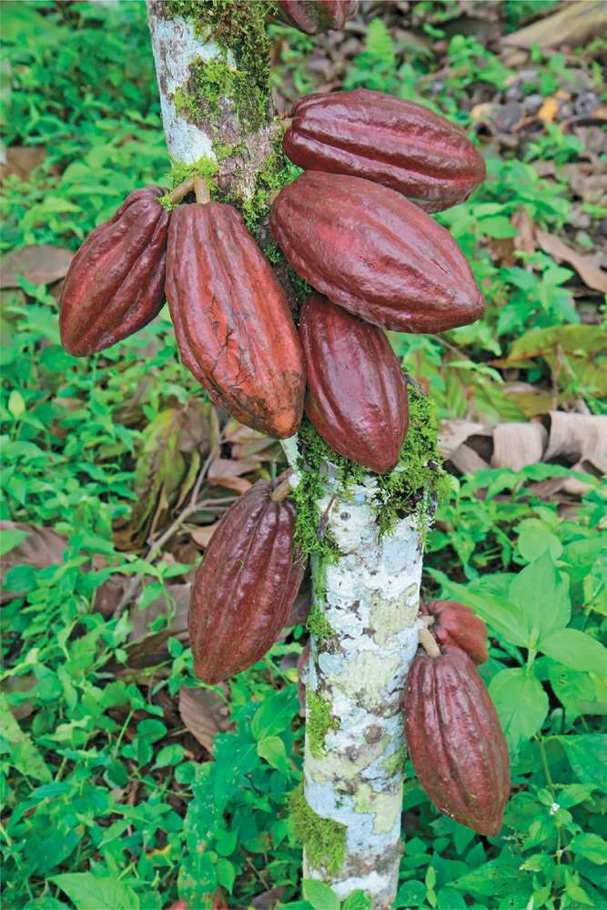Matt Ruscigno M.P.H., R.D. with Joshua Ploeg
The cacao bean, from which chocolate is made, is known as a superfood for its many nutritional benefits. It has an incredibly rich history of varied uses from drinks to coins to rituals, but today in the Western world, it has, unfortunately, become mostly just a candy bar.
Yet it has so much more to offer. From mousse (), the phenomenal cacao bean can make its way into your diet in so many ways. And not only will your taste buds thank you, but your brain and heart will, too.
Cacao isnt your run-of-the-mill healthy food; its a superstar among superfoods. We have heard quite a lot about the phytochemical content of tea, wine, and blueberries. But cacao has more than all of them. And though these foods are great, you can consume them in only so many ways. How many dishes can you make with tea or wine? There are probably more culinary uses of cacao than there are ways to eat blueberries! We are talking about a nutrient-dense, phytochemical-rich food that can be eaten in breakfasts, desserts, and every way in between.
You dont need to be a super-adventurous eater or fringe chef to use cacao in new ways and reap the benefits of this superbean. Weve developed not just a few, but seventy-five one-of-a-kind recipes to get cacao into your nutrition plan in an easy and delicious way.
What Makes Cacao a Superfood?
Cacao has an insanely high phytochemical and antioxidant content. These naturally occurring chemical compounds are the future of nutrition, disease prevention, and good health. Cacao is loaded with them. Youll learn more about this in .
Its nutrient dense. Cacao is full of minerals, fiber, and healthy dietary fat. These nutrients in combination with the phytochemicals may help lower your risk of heart disease, stroke, and more. We discuss the research in .
It makes you happy. Chocolate may be the most craved food in the world. Its full of (good!) chemicals that affect our brain and our mood. We discuss this in . How super is that?
Its a great accompaniment to physical activity. In , we discuss how soldiers, hikers, and others with serious physical demands have long used chocolate in times of great nutritional need. Today, its popular in drinks and other workout foods during and after exercise because of its caloric density and antioxidant content.
Chocolate is a high-quality food with subtle tastes, like good coffee or wine. In the appendix, we discuss the various types of chocolate available and their distinctions and classifications. Organic? Raw? Fair trade? Weve got your preferences covered.
Its extremely versatile. From QuinoaChocolate Chip Energy Bars () cacao can be added to any nutrition plan.
Its commonplace and accessible. Most everyone is familiar with chocolate and enjoys the taste. Although some work may be required to find high-quality cacao and chocolate, it is available more readily than most people realize.
You only need to consume a small amount to get the benefits. Most of the research on cacao is done using cocoa powdera low-calorie, nutrient-dense powder that, as youll learn in this book, can be added to a plethora of foods and dishes.
Milk Chocolate Is Not the Healthiest Way to Get Your Cacao
Milk chocolate, the most commonly eaten chocolate in the United States, contains very little cacao, often less than 10 percent. Instead, the majority of what you are eating are added sweeteners, dairy products, and other less healthful, refined ingredients.
The health benefits weve discussed in this book are specific to cacao; therefore, milk chocolate may not be the best way to get the benefits. Its important to read the label and to know how much cacao and other added ingredients are in what you are eating. If you are used to milk chocolate, start with the highest cacao percentage you enjoy and work your way toward darker, higher-cacao chocolate. If the cacao percentage is not offered on the label, see how high up and how often it is mentioned in the ingredients. Ideally, there is more cacao per weight than sugar or dairy products, and it will therefore appear higher on the ingredient label.
Additionally, milk may contain GMOs in the form of recombinant bovine growth hormone (rBGH). This is a genetically engineered variation on a naturally occurring hormone injected into dairy cows to increase milk production. It is banned for human consumption in the European Union, Canada, New Zealand, and Australia. Non-GMO certified and organic milks and milk chocolates do not contain rBGH.
Cacao: A Long and Intriguing History
Today, we are fortunate to have some pretty amazing and unique research on cacao. We know it has properties that are good for our hearts, it may protect our skin from harmful UV rays, and its smell alone may increase the number of books people buy at bookstores. Seriously, a group of Belgian researchers found that customers who could smell chocolate were 40 percent more likely to purchase a cookbook or romance novel and about 22 percent more likely to buy other books. Chocolate is one of those foods that we love to hear good things about because who doesnt love it?
People have loved chocolate, or at least cacao, the main ingredient in chocolate, for a very long time. The history of cacao goes back hundreds of years to pre-Columbian Mesoamerica, where the earliest proof of cacao consumption exists. The Mayans cultivated cacao as early as 300 CE on the Yucatan Peninsula. The Aztecs, 1,200 years later, were still using it regularly for a drink called xocolatl. Meaning bitter water, xocolatl was a cold, savory drink made with chiles, cloves, cinnamon, and cornmeal. The cornmeal acted as an emulsifier of sorts between the water and the fatty content of the cacao bean. It was very different from what most people imagine as a chocolate drink. Legend has it that Montezuma II drank fifty cups a day! No doubt he felt a prolonged rush from consuming large quantities of theobromine, a bitter, mildly stimulant alkaloid, and caffeine.
And wed be remiss to mention the history and benefits of cacao and not discuss the Kuna Indians who live on the San Blas Islands off the coast of Panama. They drink huge quantities of cacao to this day and have the health benefits to prove the super-ness of this superfood. Deaths from cancer, hypertension, and cardiovascular disease are extremely rare in this group of people. Why? Consumption of cacao drinks, estimated at 30 to 40 ounces (0.9 to 1.2 L) a day, is a part of their everyday life on the islandswhich isnt too far from where the first traces of cacao consumption were found.
Kuna who move to mainland Panama and adopt the eating habits of other Panamanians lose the health benefits. Their blood pressure goes up, and hypertension becomes commonplace. Their rate of chronic disease soon mirrors the mainlanders. And the research suggests this is because they have stopped drinking cacao in large amounts. In other words, they gave up a traditional diet that included cacao to a more Westernized, urban diet rife with nutrition-related diseases.

